CHANGE IN DEMAND
Change in demand which is also known as variations in demand means the change in the quantity demanded of the commodity due to the various factors like price of own commodity, price of related goods, income of consumer, taxation policy of government, tastes and preferences of the consumers etc. Change in Demand can be explained in two ways:
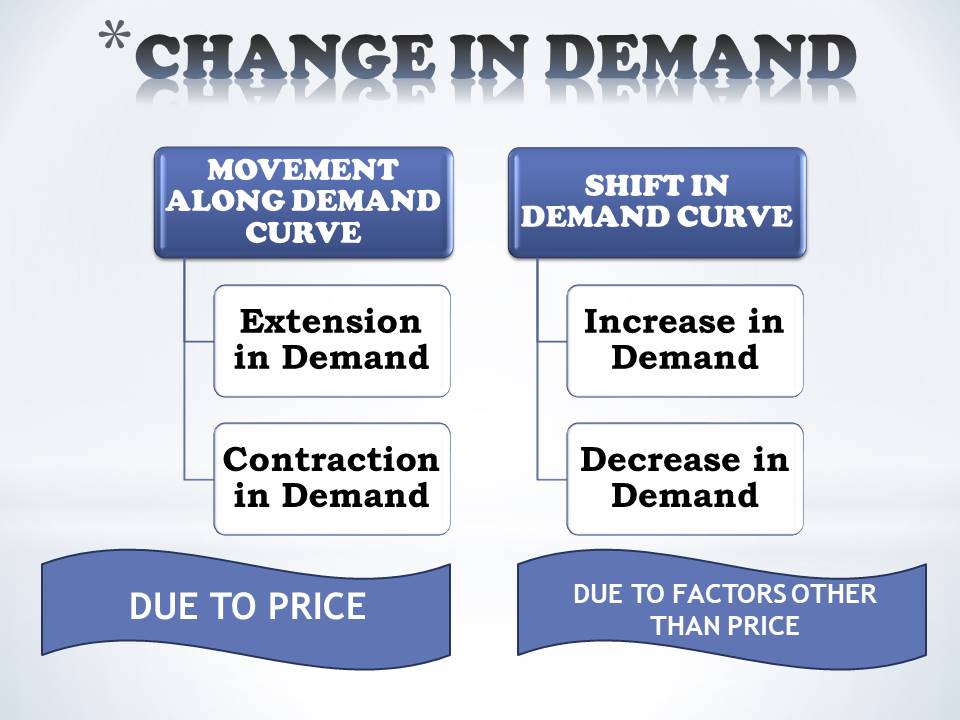
CHANGE IN DEMAND – MOVEMENT ALONG THE DEMAND CURVE
Movement along the demand curve arises, when there is the change in the demand of the commodity due to the change in price only. It is of two types:
- Extension in Demand
- Contraction in Demand
EXTENSION IN DEMAND
When there is increase in the demand due to the decrease in price, then there is a case of Extension in Demand. Extension in Demand results out of the decrease in price only which means the other factors affecting the demand will remain constant. This can be explained with the help of the following table:
| PRICE | QUANTITY | DESCRIPTION |
| 10 5 | 20 40 | Price falls Demand rises |
From the above table, it is clearly shown that at the price of ₹10 the demand was 20 units. But when the price falls to ₹5, the demand for commodity increased to 40 units.
This can also be shown with the help of curve:
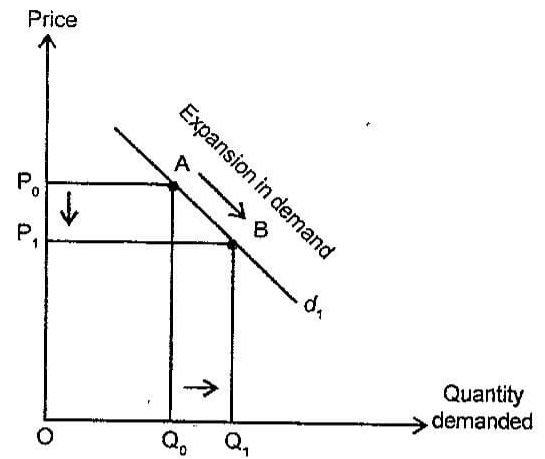
The above curve shows that at the price P0, the quantity demanded was Q1. And as the Price decreases from P0 to P1, the quantity demanded increases from Q0 to Q1.
CONTRACTION IN DEMAND
When there is decrease in the demand due to the increase in price, then there is a case of Contraction in Demand. Contraction in Demand results out of the increase in price only which means the other factors affecting the demand will remain constant. This can be explained with the help of the following table:
| PRICE | QUANTITY | DESCRIPTION |
| 5 10 | 40 20 | Price rises Demand falls |
From the above table, it is clearly shown that at the price of ₹4 the demand was 40 units. But when the price rises to ₹10, the demand for commodity decreased to 20 units.
This can also be shown with the help of curve:
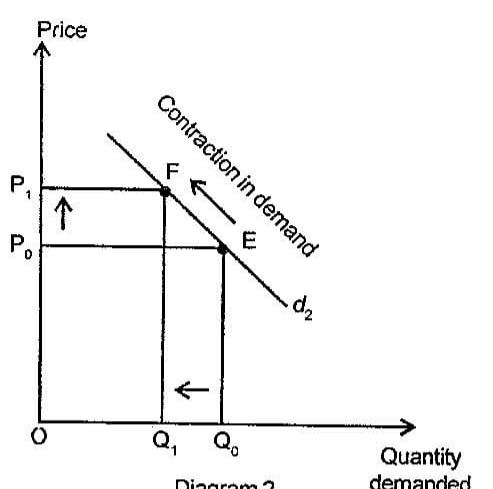
The above curve shows that at the price P0, the quantity demanded was Q0. And as the Price increases from P0 to P1, the quantity demanded decreases from Q0 to Q1.
CHANGE IN DEMAND -SHIFTS IN DEMAND CURVE
Shifts in demand curve arise when there is change in the demand due to the factors other than price. This is also called the change in the level of demand. It is of two types:
- Increase in Demand
- Decrease in Demand
INCREASE IN DEMAND
If the demand of the commodity increases due to the factors other than price like tastes and habits of consumers, increase in income of consumer etc. it can also be described as:
- SAME PRICE MORE DEMAND
- MORE PRICE SAME DEMAND
Same Price More Demand: If the price is same, but still there is increase in demand, it is a case of Increase in Demand.
More Price Same Demand: If the price of the commodity rises, but it has no impact on the demand of the commodity, it is also the case of Increase in Demand.
It can be explained as follows:
| PRICE | DEMAND |
| SAME PRICE | MORE DEMAND |
| 10 10 | 20 40 |
| MORE PRICE | SAME DEMAND |
| 10 20 | 20 20 |
The table shows when the price of the commodity is ₹10, demand is 20 units. Price remains the same but the demand increases to 40 units. It is called Increase in Demand.
Similarly, the price of the good was ₹10, the units demanded was 20. Now the price rises to ₹20 but the units demanded remains the same i.e. 20. This is also called Increase in Demand.
This can be shown with the help of curve also:
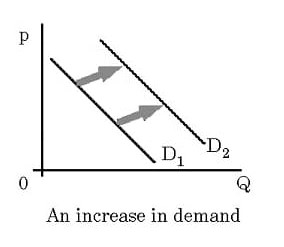
The curve shows the price remains the constant but the demand increases from D1 to D2.
DECREASE IN DEMAND
If the demand of the commodity decreases due to the factors other than price like tastes and habits of consumers, decrease in income of consumer etc. it can also be described as:
- SAME PRICE LESS DEMAND
- LESS PRICE SAME DEMAND
Same Price Less Demand: If the price is same, but still there is increase in demand, it is a case of Increase in Demand.
Less Price Same Demand: If the price of the commodity rises, but it has no impact on the demand of the commodity, it is also the case of Increase in Demand.
It can be explained as follows:
| PRICE | DEMAND |
| SAME PRICE | LESS DEMAND |
| 10 10 | 40 20 |
| LESS PRICE | SAME DEMAND |
| 20 10 | 20 20 |
The table shows when the price of the commodity is ₹10, demand is 40 units. Price remains the same but the demand decreases to 20 units. It is called Decrease in Demand.
Similarly, the price of the good was ₹20, the units demanded was 20. Now the price falls to ₹10 but the units demanded remains the same i.e. 20. This is also called Decrease in Demand.
This can be shown with the help of curve also:
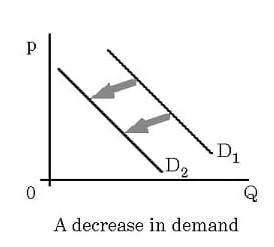
The curve shows the price remains the constant but the demand decreases from D1 to D2.